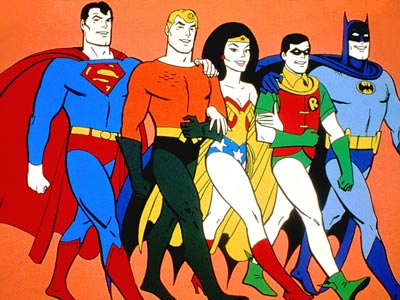
It is difficult to explain the now extinct Saturday morning cartoon experience to anybody under twenty-five, but it shared certain qualities with a Sunday morning religious service, where one dressed in ratty pajamas and multihued Underoos in lieu of serge suit and neck-restricting tie. A soaky bowl of cornflakes replaced the stale sacramental pomp and circumstance of wafers, offering an altogether different eucharist metaphor with slightly more nutritional value. Leaden and predictable hymns, in which one was badgered into belting out a tinny tune identified by number, were uprooted by Hoyt Curtin’s jazzy cues for Hanna-Barbera. And the ethical lessons arising from a pastor’s ponderous sermon found an uncanny surrogate with the didactic messages tacked onto the end of an animated adventure. Both slipped through the mind like a sieve.
But since nostalgia is a dangerous narcotic, the cartoons have retained an entirely irrational hold upon my imagination. Years later, a piece of dialogue or a backdrop hastily painted by an underpaid artist has often rustled through my mind without prompting, latching atop a more tangible life experience and sometimes threatening to supercede it.
With the recent release of Super Friends‘s first season onto DVD, I set out to understand this allure and found an oddly methadonic satisfaction. If I did not entirely put away childish things during this revistation, I certainly began to understand the draw.
In the early 1970s, Hanna-Barbera wrested away the animation rights to DC Comics’s characters, restyling the Justice League of America as “Super Friends.” It was the beginning of a gallant fourteen year run under numerous incarnations. Challenge of the Super Friends was the best of the bunch, pitting eleven superheroes (which included the newly invented Apache Chief and Samurai, both awkward nods to multiculturalism) against thirteen of their worst enemies (led by Lex Luthor) who never offered an explanation as to why they spent so much of their time shuffling around the swampy Hall of Doom. But in other versions, such as The World’s Greatest Super Friends, one had to endure Zan and Jayna – a somewhat vexing pair of siblings clad in cheesy purple uniforms, accompanied by a blue monkey named Gleek. (Presumably, fashionistas did not exist on the planet Exxor. Or maybe everybody there just liked bluish tones.) This teen duo, who had a surprisingly crisp command of American teen vernacular (or so the writers wished to believe), could, respectively, turn into water form and animal form shortly after announcing “Wonder Twin powers, activate!” Due to this verb’s alarming mechanical quality, there was considerable schoolyard speculation over whether the Wonder Twins were elaborate androids rather than extraterrestrial beings. But at the time, all of us wanted to believe in this cartoon – in part because there were then only three networks and a wild mix of UHF stations to choose from.
But the flagstones for this escapist enterprise were set down with the first season’s one-hour format, which featured a mere five superheroes (Superman, Batman, Robin, Aquaman, and a curiously underemployed Wonder Woman), while cadging archetypes and vocal talent from Scooby-Doo. The quintet that everyone tuned in to see was accompanied by three “junior superheroes,” who proved to be infinitely more annoying than the Wonder Twins: Marvin White, a redheaded Shaggy clone voiced by a young (and now legendary) “Franklin Welker,” who proved to be even stupider than his inspiration (“Wow, I’d like to be big and strong,” says Marvin in an episode called “The Shaman ‘U’,” which is then followed by a Peter Griffin-style titter); Wendy Harris, who merged Velma’s eccentricities with Daphne’s patient encouragement; and Wonder Dog, a spaced-out Scooby replica fond of scarfing down hot dogs. This trio, possessing neither pluck nor superpowers, proved so unremarkable (and unlikable) that they did not last past the first season. (Comic book writer Geoff Johns would later viciously mutilate these irksome tagalongs in a 2006 issue of Teen Titans.)
Considering these conversational conditions and Colonel Wilcox’s constant interruptions on the TroubAlert, the Super Friends’s patience is to be commended. In early episodes, Batman made futile efforts to get Marvin thinking about photosynthesis and atmospheric conditions. But by “The Shaman ‘U’,” this friendlier (and more dulcet-voiced) Dark Knight leveled with Marvin when the boy wished to accompany him, simply explaining, “We’re not taking you with us.” I can understand Batman’s reticence. Robin was a competent teenage sidekick (voiced by longtime American Top 40 host Casey Kasem) only a few years older than Marvin, but, in the hands of Hanna-Barbera, he was never a noxious pipsqueak.
While this prototype offers some unintentional laughs courtesy of tacky animation (Wonder Woman is inexplicably illustrated with thunder thighs, an animation involving Aquaman summoning three whales shows up multiple times, and Superman’s X-ray vision resembles a cheap flashlight running on dying batteries), there’s an interesting eco-friendly theme to these stories. In “Too Hot to Handle,” an alien attempts to change the Earth’s atmosphere after his home planet has become polluted. “The Weather Maker” features a scientist attempting to manipulate the Gulf Stream so that it will warm up his frigid nation. “Dr. Pelagion’s War” features a scene that is now unthinkable, where business magnates puff on expensive cigars in an executive boardroom. One cries out, “There’s no harm in a little smoke,” and offers a flourish to the smokestacks fulminating just outside his window.
But the standout here is the accidentally prescient “Professor Goodfellow’s G.E.E.C.,” whereby a giant Google-like computer named G.E.E.C. controls everything on the planet. Like Google, it can find you a cab. Like YouTube, it can educate you with a video. At the time that Super Friends was produced, “geek” didn’t yet take on its present tech-savvy connotation. And when Marvin offers to “write a letter to the G.E.E.C.,” one can just as easily imagine him firing off an email.
Narrator Ted Knight (who would find greater success as the bumbling Ted Baxter on The Mary Tyler Moore Show) doesn’t quite have the gravitas of his booming successor, William Woodson. And the primitive transitions between scenes can’t compare to the three stars shooting towards the viewer in later years. But Robin’s exclamations were more epigrammatic during the first year. (He lets loose “Holy misnomers!” and “Perambulating plexiglass!”) Danny Dark, later known as “the voice of NBC,” is suitably slick, perhaps too slick, as Superman. Dark’s confident voiceover, taken with Superman’s frequent collaboration with Aquaman to resolve some amphibian crisis, makes one feel as if poor Aquaman, who merely has the ability to communicate telepathically with his “ocean friends,” is unfairly upstaged by Superman’s considerable talents.
These were imperfect entertainments, divested of grit and violence, that would be severely dwarfed by the Cartoon Network’s Justice League during the 21st century. But someone had to work out the kinks and get kids excited. Super Friends‘s enduring appeal can be measured by the limitless YouTube remixes, the unceasing flow of cultural reference (a recent episode of Family Guy opened with a parody of the opening credits), and the fact that superheroes, even those contained in watered-down narratives, still capture the imagination.

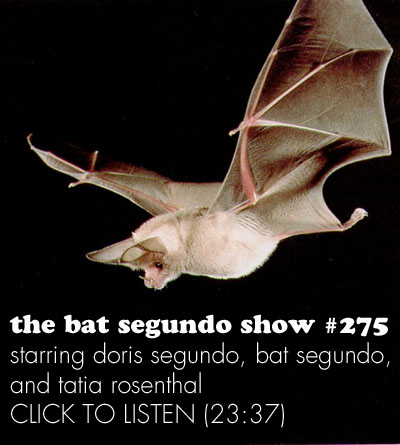

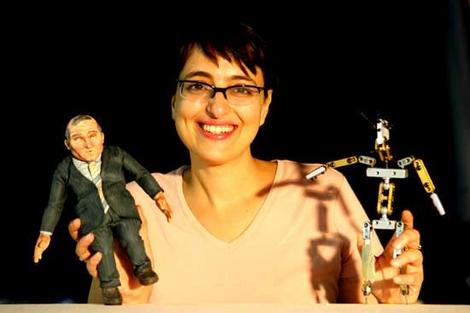
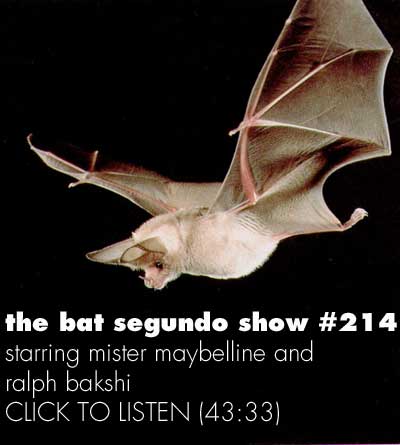
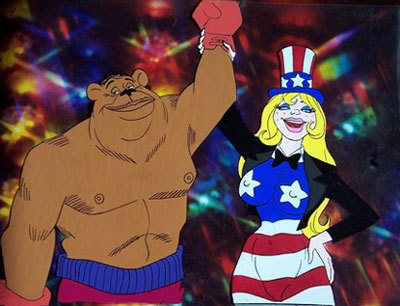 Correspondent: I wanted to ask you about music in your films. It’s certainly important in American Pop. You pilfered from your record collection for that, as well as the “Maybelline” sequence in Heavy Traffic. And there’s “Ah’m a Niggerman” from Coonskin, which you wrote. I’m wondering if you did this because you have an aversion to Carl Stalling-style orchestral music.
Correspondent: I wanted to ask you about music in your films. It’s certainly important in American Pop. You pilfered from your record collection for that, as well as the “Maybelline” sequence in Heavy Traffic. And there’s “Ah’m a Niggerman” from Coonskin, which you wrote. I’m wondering if you did this because you have an aversion to Carl Stalling-style orchestral music.

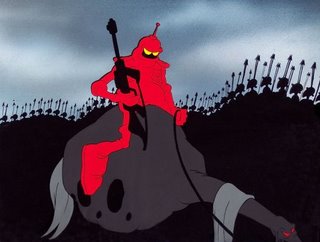 Bakshi: Well, Andrew Belling on Wizards did an absolutely brilliant job. Let’s talk about Wizards. Wizards is very low-budget. One million two. Okay. I’m not going to fall back on my records, because it’s not that kind of movie. I need a score. But I need a score that I love. And I don’t remember how I got to Belling. I’d been to New York with a lot of other guys. But Belling came with a little synthesizer. One little machine which was a very big deal. We didn’t have any orchestra. We had synthesizers. All that music was done with Belling in the room. And he said the right things and he did the right things. And he came back and he played me a piece of music that was beautiful. I think Belling did an incredible job in that song he wrote. And the battle scenes. And the emotion. Belling nailed it. He did it himself and everything. It was all done without an orchestra. It was good.
Bakshi: Well, Andrew Belling on Wizards did an absolutely brilliant job. Let’s talk about Wizards. Wizards is very low-budget. One million two. Okay. I’m not going to fall back on my records, because it’s not that kind of movie. I need a score. But I need a score that I love. And I don’t remember how I got to Belling. I’d been to New York with a lot of other guys. But Belling came with a little synthesizer. One little machine which was a very big deal. We didn’t have any orchestra. We had synthesizers. All that music was done with Belling in the room. And he said the right things and he did the right things. And he came back and he played me a piece of music that was beautiful. I think Belling did an incredible job in that song he wrote. And the battle scenes. And the emotion. Belling nailed it. He did it himself and everything. It was all done without an orchestra. It was good.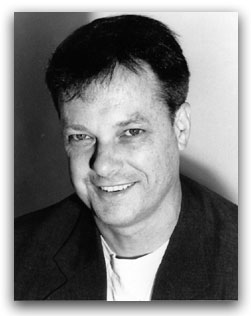 If you don’t know who Bill Plympton is, you’re missing out on one of the most unique independent animators now working in America. Plympton emerged into national consciousness when many of his shorts begin appearing on MTV’s Liquid TV during the late 1980s and early 1990s. This came concomitantly with success on the film festival circuit — in particular, with Spike & Mike’s Sick and Twisted Festival of Animation. But, ironically, his work has found greater appreciation outside of the States. In his own country, he’s considered more of a cult item. Which is too bad. Because if this were a just universe, Plympton would be considered a national treasure.
If you don’t know who Bill Plympton is, you’re missing out on one of the most unique independent animators now working in America. Plympton emerged into national consciousness when many of his shorts begin appearing on MTV’s Liquid TV during the late 1980s and early 1990s. This came concomitantly with success on the film festival circuit — in particular, with Spike & Mike’s Sick and Twisted Festival of Animation. But, ironically, his work has found greater appreciation outside of the States. In his own country, he’s considered more of a cult item. Which is too bad. Because if this were a just universe, Plympton would be considered a national treasure.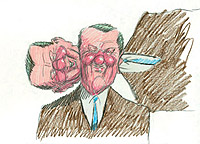 I guess that character, who was originated in “Your Face,” was inspired a little bit by Bud Abbott on Abbott & Costello. The pencil-thin moustache guy with the suit, the slicked back hair. Kind of a sleazy salesman type guy. And that film was such a big success, such a big hit, that I continue that character on through “The Wise Man” and through “Push Comes to Shove,” and a bunch of my feature films — The Tune and Mutant Aliens and I Married a Strange Person. So those films use that character a lot. And I’ve found that he’s a very good character for laughs.
I guess that character, who was originated in “Your Face,” was inspired a little bit by Bud Abbott on Abbott & Costello. The pencil-thin moustache guy with the suit, the slicked back hair. Kind of a sleazy salesman type guy. And that film was such a big success, such a big hit, that I continue that character on through “The Wise Man” and through “Push Comes to Shove,” and a bunch of my feature films — The Tune and Mutant Aliens and I Married a Strange Person. So those films use that character a lot. And I’ve found that he’s a very good character for laughs.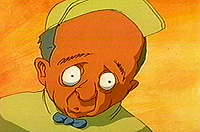 Plympton: A thin guy and a stockier guy. I guess that was inspired by the old Laurel & Hardy gag where they would take an egg and squash it on his head and put the hat back on. It was very dry humor. Very deadpan humor. And then that would escalate. And it escalated into, I don’t know, getting hit by a board or something like that. Well, I wanted to take that escalation and exaggerate it even more. So it becomes so violent and so surreally violent, that it’s just preposterous. And that was my initial inspiration for the film. So Alfred Hitchcock wouldn’t be someone I would say. It was more like Laurel and Hardy. Although even then, Oliver Hardy is more of a caricature than I would want to use. I brought him down as to more of a normal person than Oliver Hardy.
Plympton: A thin guy and a stockier guy. I guess that was inspired by the old Laurel & Hardy gag where they would take an egg and squash it on his head and put the hat back on. It was very dry humor. Very deadpan humor. And then that would escalate. And it escalated into, I don’t know, getting hit by a board or something like that. Well, I wanted to take that escalation and exaggerate it even more. So it becomes so violent and so surreally violent, that it’s just preposterous. And that was my initial inspiration for the film. So Alfred Hitchcock wouldn’t be someone I would say. It was more like Laurel and Hardy. Although even then, Oliver Hardy is more of a caricature than I would want to use. I brought him down as to more of a normal person than Oliver Hardy.